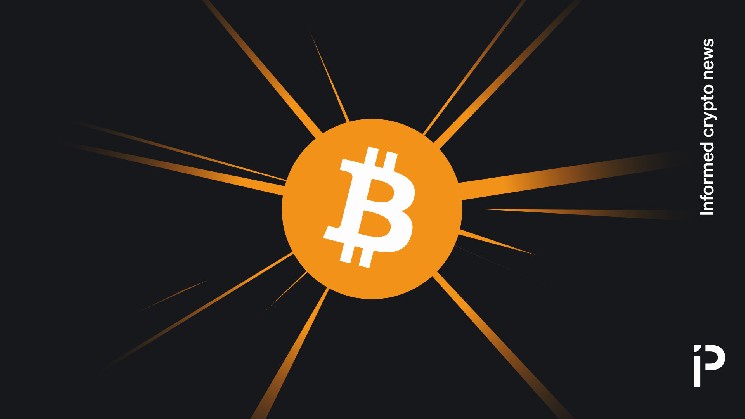Bitcoin’s Price Drop: Anatomy of a Market Misinterpretation
What Really Happened During Yesterday’s Bitcoin Sell-Off and Why It Wasn’t a “Flash Crash”
In the volatile world of cryptocurrency trading, price movements can trigger waves of speculation and misinformation that spread faster than the market can correct itself. Yesterday’s bitcoin price action served as a perfect case study in how digital asset markets function—and how easily market events can be mischaracterized in the age of social media.
At 3:30 PM New York time yesterday, bitcoin (BTC) experienced what many hastily labeled a “flash crash.” The leading cryptocurrency’s price declined from $114,683 to $110,635 within a brief seven-minute window on its most liquid USD trading pair, before stabilizing in the $112,000 range for several hours afterward. What followed, however, was far more dramatic than the price movement itself: an explosion of claims, counterclaims, and outright misinformation across social media platforms and crypto communities worldwide.
The Anatomy of Market Movements vs. Social Media Reactions
“PEOPLE WILL GO TO JAIL FOR THIS!” declared one particularly agitated observer, whose post quickly gained traction across multiple platforms. This sentiment exemplified the knee-jerk reactions that often follow market movements in the cryptocurrency space, where regulatory uncertainty and historical market manipulation have created a hypervigilant community of investors.
Influential voices in the crypto space quickly amplified the narrative of a flash crash, stoking concerns among millions of investors about potential continued downward pressure. Some prominent voices warned of additional selling from the same wallet addresses that initiated the 3:30 PM transactions, further fueling market anxiety. The digital currency ecosystem has long grappled with information asymmetry challenges, and yesterday’s event highlighted how quickly speculation can outpace factual analysis.
Separating Market Reality From Social Media Fiction
As the hours passed, the disconnect between market reality and social media narratives grew increasingly apparent. One commentator with a substantial following of over 150,000 viewers claimed that bitcoin had dropped below $110,000—a statement that was demonstrably false across major exchanges including Coinbase, Bitstamp, and Kraken, where no major fiat trading pairs recorded such lows.
What makes this mischaracterization particularly noteworthy is the scale of misinformation: posts about the supposed “flash crash” generated millions of combined impressions across platforms, despite the fact that market data showed a relatively orderly and unremarkable sell-off by cryptocurrency standards. This pattern of viral misinformation underscores a troubling reality in digital asset markets: the more sensational or inaccurate a claim, the more attention and engagement it typically receives in the crypto information ecosystem.
Understanding True Flash Crashes in Cryptocurrency Markets
“The most remarkable part of yesterday’s trading action was its misinterpretation,” noted one market analyst who requested anonymity due to the sensitive nature of commenting on market events. Indeed, cryptocurrency markets have experienced genuine flash crashes in previous cycles—characterized by instantaneous, severe price drops followed by equally rapid recoveries to near-original levels within minutes.
Yesterday’s price action, however, displayed none of these defining characteristics. The bitcoin price declined in a relatively orderly fashion over several minutes rather than seconds, and critically, it made no attempt to fully recover its previous position for many hours afterward. This behavior is more consistent with normal market absorption of larger sell orders than with the technical glitches or cascading liquidations that typically define true flash crashes in digital asset markets.
Legal and Regulatory Context of Large-Scale Cryptocurrency Sales
Despite emotional reactions suggesting criminal activity, market experts uniformly agree that no laws were broken in yesterday’s trading activity. “It is not illegal to sell a large quantity of a global commodity,” explained Eleanor Terrett, a cryptocurrency regulatory correspondent. “The digital asset markets operate on a 24/7 basis precisely to accommodate global trading activity across all sizes of market participants.”
While market manipulation remains a concern in less regulated cryptocurrency exchanges, the activity observed yesterday across major regulated platforms showed no evidence of wash trading, spoofing, or other prohibited practices. Rather, it demonstrated the market functioning as designed: absorbing sell pressure, finding new equilibrium prices, and continuing to facilitate trading. The lack of a coordinated cross-exchange drop below key support levels further suggests the absence of manipulative intent that would warrant regulatory intervention.
The Information Challenge in Cryptocurrency Markets
Yesterday’s bitcoin price action and the subsequent information cascade reveal a persistent challenge in cryptocurrency markets: the quality of market information remains inconsistent, with emotional reactions often drowning out factual analysis. This information asymmetry creates additional volatility beyond what market fundamentals might warrant.
For cryptocurrency investors, the lesson is clear: developing the ability to distinguish between normal market functions and genuine anomalies remains crucial. As bitcoin continues its maturation as an asset class and attracts institutional participation, the market’s resilience to large orders will likely improve—but the quality of information surrounding market movements may require equally significant advancement.
When the next significant price movement occurs—whether upward or downward—market participants would be well-served to wait for comprehensive data before drawing conclusions or making investment decisions based on social media narratives. In a market where perception can temporarily override reality, the ability to maintain analytical discipline may prove as valuable as any trading strategy.














